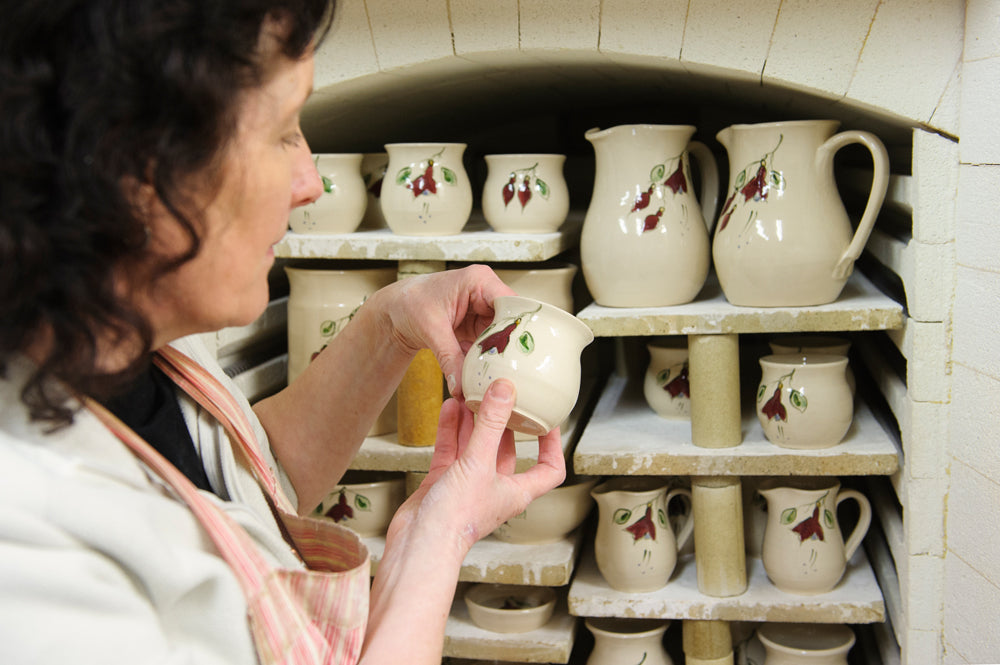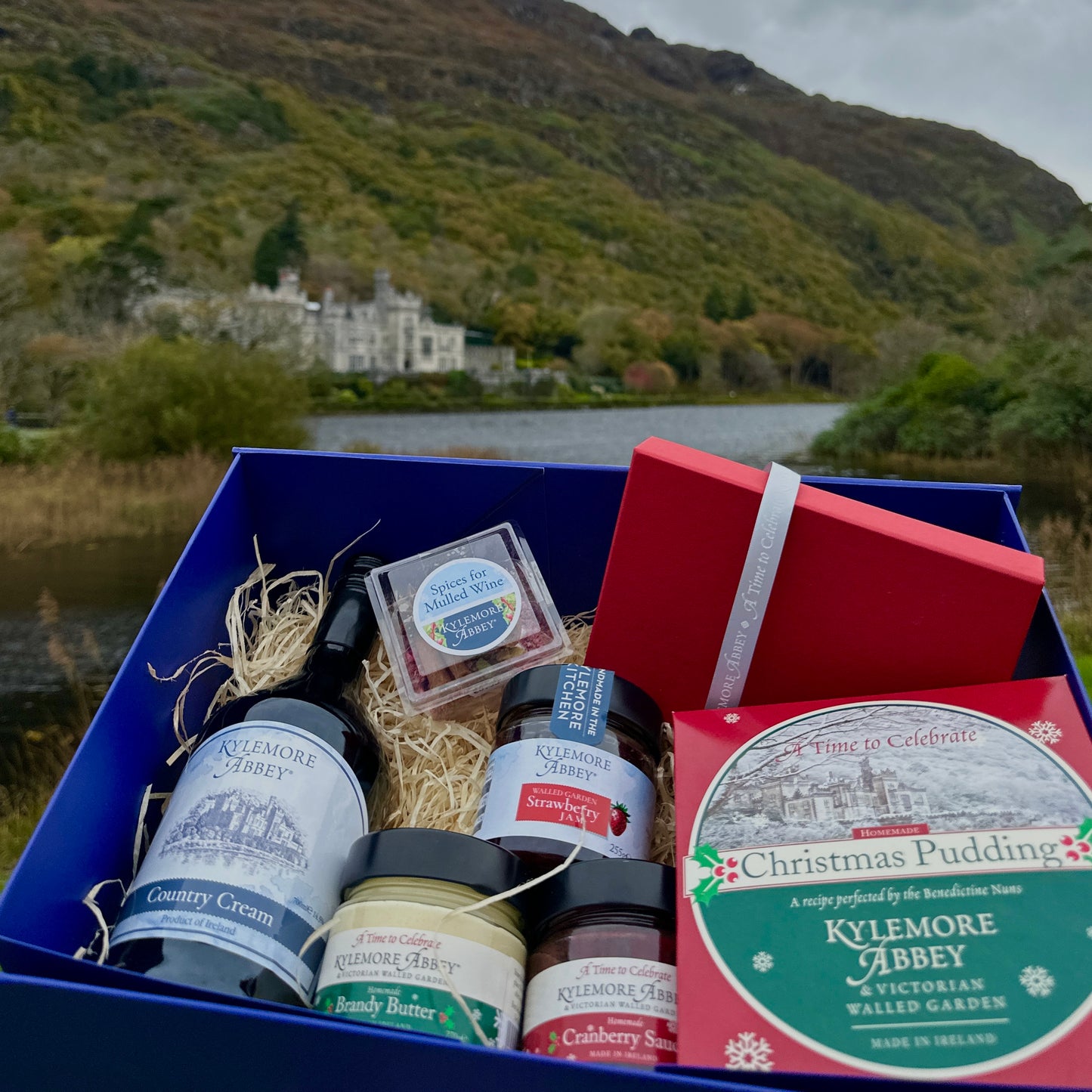
Kylemore Abbey Pottery was established by the Benedictine Nuns in 1973. The pottery was first produced by Sr. Agatha Martin who trained at Youghal Pottery, Co. Cork. Sr. Agatha who was originally from Dublin, first came to Kylemore as a boarder in Kylemore Abbey Girls School. After leaving school she became a nurse in Temple Street children’s hospital before returning to Kylemore to take up her vocation. Sr. Agatha was joined in the pottery by other members of the community including Sr. Aidan, Sr. Marie Bernard and Sr. Josephine. The Sisters first produced a plain glazed pottery in blues, greens, amber and browns.

The Fuchsia
The wild fuchsia flower known in Gaelic as “Deóra Dé, Tears of God” grows in abundance along the winding roadside of Connemara. The fuchsia was introduced to Ireland by Victorian gardeners and like other varieties such as montbresia and rhododendron, has become part of the fabric of rural Ireland. Although it hails from much more exotic climes, the fuchsia thrives in the mild winters and acidic soils of Connemara. As it grows easily from cuttings it has been widely used as a hedging plant and in the past often also as a way to subdivide farm holdings, thus its rapid spread along the western seaboard.
As their confidence grew the sisters began to look to nature and local flora in particular as the inspiration for their work. The results was beautiful pieces, hand-painted with fuchsia, harebell and heather places over a grey speckled glaze. Over the years the Sisters were joined in their work by local crafts people such as Lilian Rieckstins, Mary Staunton, Priscilla McNamara and others who carried on the careful and time consuming work. Mary Staunton is a skilled thrower and decorator who continues the work in the Pottery Studio today.

The Process
When the piece has been formed on the wheel it is known as Green Ware and then allowed to dry for 2 – 3 days. When the clay has become ‘leather hard, additional pieces such as handles and spouts can be added. The pieces are then ready for the first kiln firing ( known as ‘Biscuit’ firing ) which usually takes about 10 hours. Once removed from the kiln after the first pieces are then known as ‘Biscuit Ware’.

The Biscuit Ware is decorated using a combination of brush and sponge to apply the fuchsia motif. After decoration the Biscuit Ware is dipped in transparent glaze which created the characteristic high gloss sheen. After a second firing in the kiln, each piece is ready for its final inspection.





